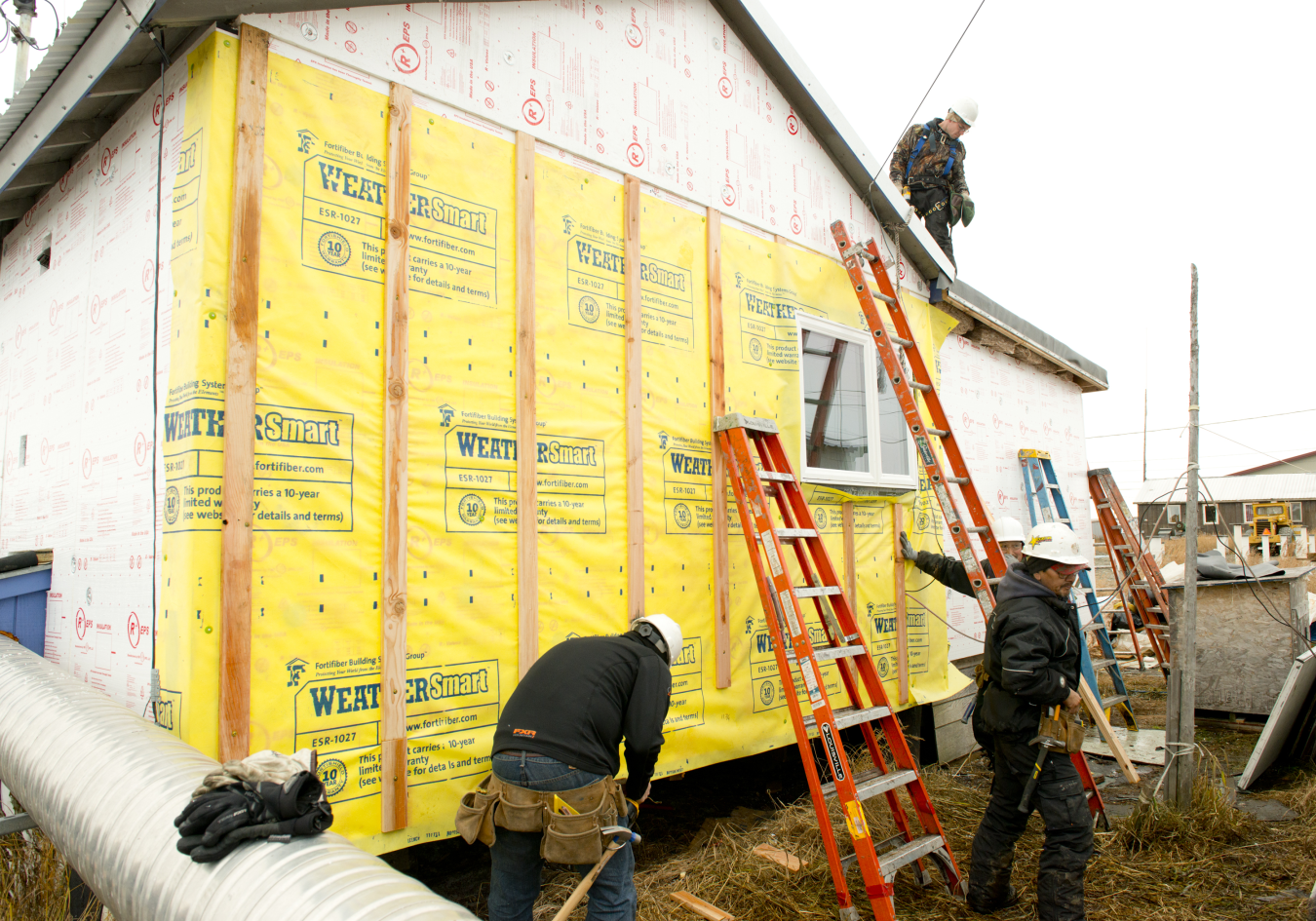Support from the Energy Department’s State Energy Program (SEP), is helping Alaska building managers and facility owners understand best practices for energy efficiency retrofits and retro-commissioning, and tools for monitoring and improving energy ...
Office of Critical Minerals and Energy Innovation
June 3, 2016
Many homes in Alaska such as this one under construction are using energy much more efficiently as a result of financial support from the Energy Department to the state. Photo courtesy Alaska Housing Finance Corporation. (AHFC)
Support from the Energy Department’s State Energy Program (SEP), is helping Alaska building managers and facility owners have a stronger understanding of best practices for energy efficiency retrofits and retro-commissioning, and tools for monitoring and improving energy use in remote villages.
In 2012, Alaska received approximately $487,000 in SEP competitively awarded financial assistance for the Alaska Housing Finance Corporation (AHFC,) a self-supporting public corporation. This effort accelerated progress toward the state’s goal of achieving a 15% reduction in energy consumption in public buildings by 2020.
During the past four years, outreach has extended to many different groups including facility owners, managers and project developers. This resulted in over 2,200 participants attending 200 events, including energy efficiency meetings, speaking engagements and conferences.
The award helped AHFC publish education materials, such as the “Introduction to Energy Efficiency: A Guide to Managing Energy Use in Public & Commercial Facilities.” AHFC also developed classes on energy efficiency retrofits that reached more than 1,200 students.
The Energy Department is also helping Alaska raise awareness of the benefits of energy efficiency retrofitting and retro-commissioning in its public sector. Retro-commissioning, unlike retrofits, optimizes the performance of existing building equipment, focusing on operations and maintenance efficiencies and can be a key tactic in reducing Alaska’s energy expenses, which are especially high since the state has some of the most expensive heating costs in America.
This isn’t the only SEP-funded project successfully commissioned by the AHFC. In 2013, the AHFC began researching, developing and testing a building energy monitoring software that will increase a building’s efficiency and performance. The system, called BMON, is a web-based software application that tracks real-time energy use in a building, including occupancy and temperature, from any remote location. The software is already being widely applied in Alaskan Native villages, cutting energy costs and providing other vital services.
The Energy Department’s State Energy Program provides funding and technical assistance to energy offices in states and U.S. territories to advance local clean energy priorities while contributing to national energy goals. Learn how the State Energy Program is making a difference in other states.

